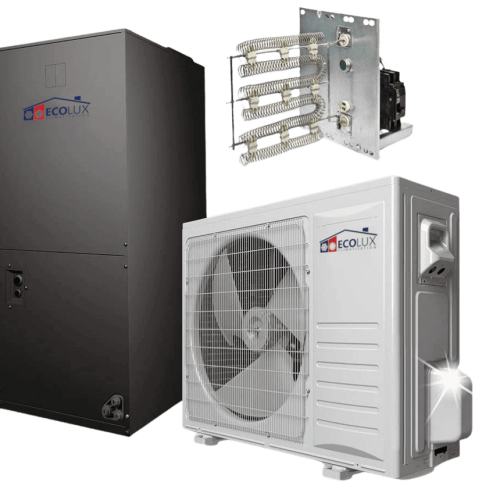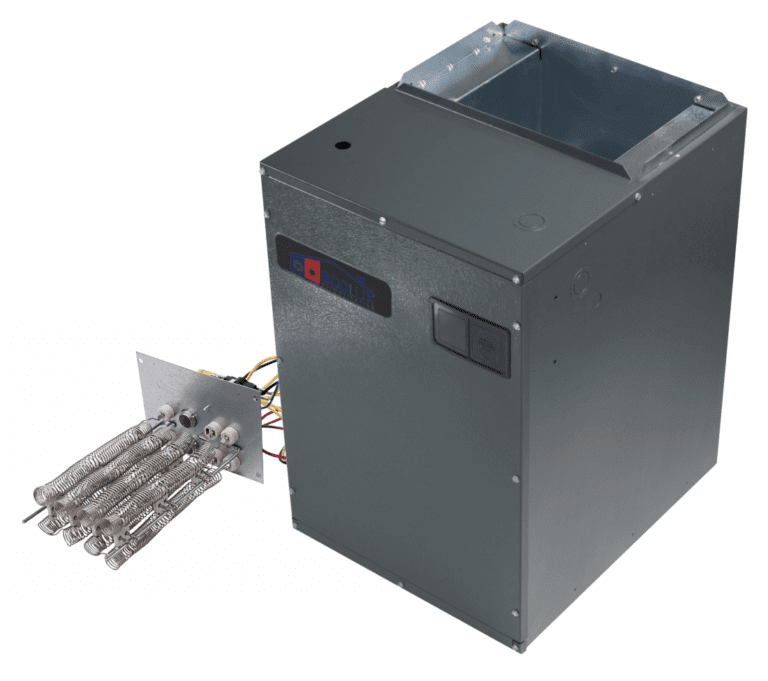Wall-mounted (ductless) air conditioners
Wall-mounted air conditioners, also known as “mini-split systems”, are the most common type of air conditioning systems. Wall-mounted air conditioners are composed of an outdoor unit and an indoor unit. They are called “wall-mounted” because the indoor unit is placed on the inside wall of the room to be cooled.
There are many different models on the market, available in various designs and having a large and constantly improved and automated set of options. To be noted that every wall-mounted air conditioner has a basic set of available options:
- Filter air cleaning
- Timer
- Ventilation and dehumidification mode
- Remote control
Recent inverter-driven mini split systems can save energy, have a reduced noise level and an extended life span – all these features make them an attractive purchase and a perfect long-term investment.
A wall-mounted air conditioner is selected depending on the type and size of the room. Choosing the right model is very important and will lead to the desired outcome.

Central (Ducted) Air Conditioners
A central air conditioning (Central A/C) is generally defined as an air cooling system based on the following principle: the centrally cooled air is pushed through a number of ducts to one or several rooms. The vents in the ceiling or the floor of a room are usually indicating the presence of a central air conditioning system. Such a system has been available in the majority of the houses built after 1975 in USA and Canada.
The central air conditioner has the following advantages:
- Better air circulation
Normally, a central A/C provides better air circulation than a wall-mounted one. The main advantage of a central A/C is its capacity to create a comfortable microclimate in the whole building, consisting of many rooms of different sizes. In addition, central air conditioners are reliable and durable machines: the majority of the manufacturers are offering warranties of 10 years and more.
- Constant temperature
Being able to control the temperature in each room independently is another significant advantage of a central A/C. In addition, such a unit will always maintain a constant temperature.
- Programmable thermostat
The majority of central air conditioners are equipped with programmable thermostats. A “smart thermostat” will allow temperature control even when being outside of the house. You can just turn the A/C before arriving at home so that you could enjoy a cool room on a warm day.

Wall-mounted heat pumps
The main distinction between an air conditioner and a heat pump is that an air conditioner can only be used to cool your living space.
A heat pump is able not only to cool but also to efficiently heat your house in winter.
A wall-mounted heat pump has the following advantages:
- Has a low power consumption: A low power consumption is achieved by a high-efficiency ratio (300% to 800%) and allows 3-8 kW of thermal energy or up to 2.5 kW of output cooling capacity to be obtained for 1 kW of electricity.
- It’s environmentally friendly: A wall-mounted heat pump is environmentally friendly for both people and the environment. Using wall-mounted heat pumps contributes to saving non-renewable resources and protecting the environment, including by reducing CO2 emissions.
- It’s safe: No open flames, no exhaust smoke, no soot, no diesel odour, no gas leaks, no fuel oil spillage. No storage of fire-hazardous coal, wood, fuel oil or diesel fuel.
- It’s reliable: A wall-mounted heat pump has a minimum of highly durable moving parts. It does not depend on any kind of furnace fuel and has a life span of 15 to 25 years.
- It’s comfortable: The heat pump has a silent operation (it’s no louder than a regular refrigerator), it’s auto and multi-zone climate control modes create comfort and coziness.
- It’s flexible: A wall-mounted heat pump is compatible with any heating system and can be installed in any type of room. To be noted that the mini-splits come to have capacities ranging from 7000 BTU to 48000 BTU.

Central heat pump
Nowadays the central heat pumps are widely used around the world.
They are tens of millions of heat pumps operating in the USA, Canada and Europe.
The central heat pump’s advantages are as follows:
- Has a low power consumption: The inverter-driven compressors of the central heat pumps can operate at different capacities. As a result, it becomes possible to adjust the heat transfer level depending on the consumer’s needs at a given moment of time. Such an option increases the life span of the compressor and significantly reduces power consumption. A heat pump is capable of operating with an outside temperature of up to -35C and provides a 30% to 50% economy when compared to the most efficient electrical heating systems.
- It’s comfortable: The majority of central heat pumps are equipped with programmable thermostats. A “smart thermostat” can be operated remotely, so you don’t need the heating or cooling to be on when you are not at home. The main advantage of a central heat pump is its capacity to create a comfortable microclimate in the whole building, consisting of many rooms of different sizes.
- It’s environmentally friendly: A central heat pump is environmentally friendly for both people and the environment. Using central heat pumps contributes to saving non-renewable resources and protecting the environment, including by reducing the CO2 emissions.
- It’s safe: No open flames, no exhaust smoke, no soot, no diesel odour, no gas leaks, no fuel oil spillage. No storage of fire-hazardous coal, wood, fuel oil or diesel fuel.
- It’s versatile: To be noted that basically any central heat pump can be added additional equipment: an air humidifier, an air exchanger or performance air filters.

Electric Furnaces
Electric heating is most prevalent in Quebec.
An electric furnace provides heating by using electric resistance. The hot air is further pushed by a ventilator and distributed to different rooms through a network of ducts. Operated by means of a thermostat, the electric furnace is an efficient and reliable device that very rarely requires any maintenance. The electric furnace will definitely meet your needs because it has a low noise level, it’s safe and reliable. It does not have any toxic emissions and helps avoid having inconsistent temperatures. In addition, the electric furnace can be easily installed and it can be used together with an air conditioner.


